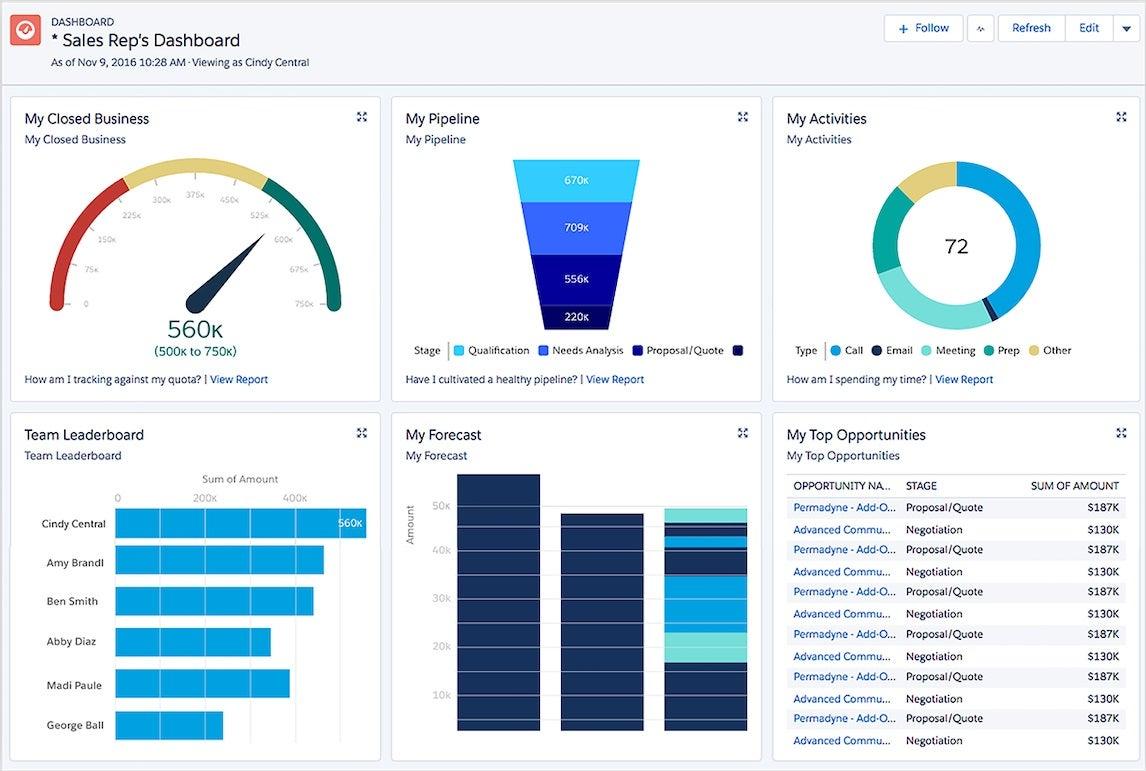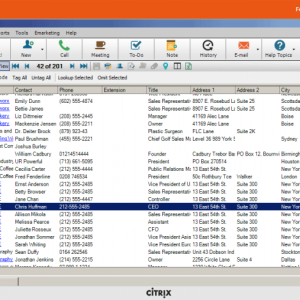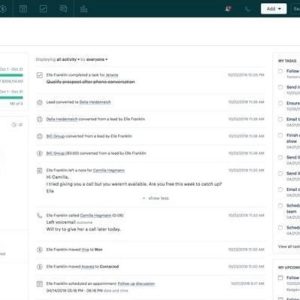In today’s competitive business landscape, customer relationship management (CRM) plays a pivotal role in driving sales growth and ensuring customer satisfaction. One crucial aspect of CRM is the use of sales dashboards, which provide real-time insights and data visualization to sales teams. These dashboards not only help sales personnel track their progress and identify areas for improvement but also assist managers in making informed decisions. With a myriad of options available, this article aims to explore some of the best examples of sales dashboards for CRM, highlighting their features and benefits in empowering sales teams to achieve their targets efficiently and effectively.
Sales dashboards are analytic tools designed to allow your business to track, manage, and visualize valuable insights into how your team is performing during a given time period.
You are viewing: Best Examples of Sales Dashboards for CRM
There’s no point in tracking data and analytics at your sales business if you can’t see how it impacts your business. With sales dashboards, you can get a clear picture of your team’s performance through visualized data.
However, not all sales dashboards are created equally. To give you the power to make the right decision for your business, we’ve collected the best examples of sales dashboards from the top CRM providers. Plus, you can check out our CRM comparison page for an in-depth look at your options.






Examples of different kinds of Sales dashboards from Salesforce, TouchBistro and NUACOM
Images: Duanetoops testing
A sales dashboard is an analytic tool for sales companies to effectively and comprehensively track data across their business. Within CRM software, these reports are designed to provide a clear picture of metrics, inlcuding revenue, deals closed, sales pipeline status, lead progress, and a win/loss ratio.
As shown above, other business tools, such as VoIP software or POS software, may also offer Sales dashboards in relation to their products; these might track Sales calls specifically or Sales by items sold from your till, for example, but CRM software will provide a strategic overview of sales performance against your client/customer network.
The goal of a sales dashboard is to help employees understand how your sales strategy is performing. It can provide you with actionable insight into which deals need to be closed and the progress of your sales pipeline over the course of a day, a week, a month, or even a year.
Sales dashboards are most commonly used by sales managers who want to get an idea of how the team is performing, but they can also be used by individuals to see project progress or executive level employees to see long term success.
Sales Dashboard CRM Examples
Now that we know what a sales dashboard is, let’s take a closer look at some examples from the top CRM providers for 2023. We’ve set up sales dashboards using each of the CRM providers below to give you a taste for their features and to help you decide whether they could work for your business.
- Salesforce– Best sales dashboards overall
- Freshsales– Easiest sales dashboards to create
- monday CRM– Most customizable sales dashboards
- Zendesk Sell– Best sales dashboards to combine with customer service
- Keap– Best sales dashboards for email marketing
Salesforce – Best sales dashboards
There are no ifs, ands, or buts about it: Salesforce is the cream of the crop when it comes to sales dashboards. The platform is the most popular CRM in the world by a staggering margin, largely due to the fact that it offers some of the most robust, customizable dashboards that can easily be used to track a wide range of metrics, like revenue and KPIs (as seen below).
In fact, our research found that the sheer volume of information — like emails, tasks, call logs, contact data, outreach campaign information, lead information — really sets Salesforce apart. If you’re a business with a lot of information to utilize, you’ll get the most out of Salesforce dashboards. Plus, the company has rolled out new generative AI features that allows for even more data to be collected and analyzed.
The downside of Salesforce is that it’s quite expensive and generally geared towards larger companies. Even its Essentials plan starts at $25 per user, per month — far more than the $10 per user, per month for monday CRM — and there is no free plan — unlike Freshsales. Still, you do get access to all analytics and reporting features with its starter plan, so if you’re priority is sales dashboards, you can get them for only $25 per user, per month.
Check out our Salesforce pricing guide for more information

KPI Dashboard in Salesforce
Image: Duanetoops testing
Freshsales – Easiest sales dashboards to create
If you’re a smaller business that needs lower costs and better ease of use for your sales dashboards, Freshsales might be a better fit than Salesforce. The interface is built so that it is easily navigated, even by beginners, and it offers basically the same dashboard functionality as Salesforce across it’s paid plans.
See more : Zoho Pricing – How Much Does Zoho CRM Cost?
The only difference is that Freshsales locks the ability to make sales forecasts in its most expensive plan — the $69 per user, per month Enterprise plan. Subsequently, if you need that functionality and you need to save money, Freshsales might not be your best option, as options like Salesforce give you this functionality for much cheaper.
Still, considering Freshsales is the easiest CRM to use, according to our research, it has a place for any small business that wants to get started quickly and easily. For dashboards, though, we ran into a few issues when it came to viewing contact names in Kanban boards, and a lack of automation in this process was a bit of a time-suck.

Contacts Dashboard in Freshsales
Image: Duanetoops testing
monday CRM – Most customizable sales dashboards
Working as a niche business can be tough when it comes to sales dashboards because many of them have set objects and fields that can’t be changed. With monday CRM, you’ll get complete control, including customizability options like fields, objects, task types, and dashboards. Plus, you get a custom automation builder, but only when you pay for the $14 per user, per month Standard plan.
For actual dashboards, monday CRM provides unique, independent dashboards for different purposes, each with a different set of information. This can cause issues for beginners, as we found it to be unclear what the purpose of each dashboard was in real time.
There are other cons to monday CRM when it comes to sales dashboards, too. Sales forecasting is only available with the Pro plan, which costs $24 per user, per month. On top of that, you can’t view data on sales reps or pipeline stages unless you opt for the Enterprise plan, and that requires you to reach out to sales to get a quote. Yes, monday CRM is an affordable and customizable option, and considered one of our top sales management software options, but there are definitely more robust sales dashboards options on this list, like Freshsales, which allows you to view data on sales reps and pipeline progress for only $15 per user, per month.
Check out our monday CRM review for more information

Contacts Dashboard in monday CRM
Image: Duanetoops testing
Zendesk Sell – Best sales dashboards to combine with customer service
We’ll start out by saying that Zendesk Sell isn’t the best when it comes to sales CRM. There are no custom reports or chart builder functionality in any paid plan, and the $19 per user, per month Team plan — which is more expensive than the starting plans for monday CRM and Freshsales — exclusively allows users to view revenue data and that’s it. However, once you start paying a bit more, you get access to sales forecasting, and data on sales reps and pipeline stages. Still, it’s overall functionality as a sales CRM leaves a lot to be desired.
Additionally, we found the Zendesk Sell analytic dashboard is quite crowded. The whole new menu filled with different reports and views could easily intimidate a small business owner, but it is quite robust, so larger businesses could find that it handles everything they need. With metrics like “Loss Reason by Source” and “Time to First Action by Owner,” you’ll have plenty to view in your dashboard.
The biggest draw of Zendesk Sell, however, is that it integrates with Zendesk, our top choice for CRM for customer service. This integration allows businesses to combine sales and customer service dashboards into a single, all-in-one hub. If your business needs this level of functionality, the downsides of Zendesk Sell might be worth it.
Check out our Zendesk Sell review for more information

Revenue Dashboard in Zendesk Sell
Image: Duanetoops testing
Keap – Best sales dashboards for email marketing
Much like Zendesk Sell, Keap doesn’t offer a top three option when it comes to sales dashboards. You’ll only get access to custom reports, revenue data, and pipeline stage progress, but you’ll miss out on sales forecasting, chart building, and individual sales rep data.
On top of that, you have fairly limited customizability, with no allowance for custom objects, task types, or forms, but you do get customizable dashboards. However, the dashboards aren’t nearly intuitive enough for the average user. We found them to be cluttered and hard to read, even when removing widgets and customizing the criteria.
The benefit of Keap is that it is a sales and email marketing platform combined into one option, so your dashboards can be integrated with your email marketing campaign. Yes, they’re limited in functionality, but if you need it for email marketing, this option could be your best bet, even at the high starting price of $129 per month for 1,500 email contacts.
Check out our Keap pricing guide for more information

See more : Best Lead Management Software 2023
Home Dashboard in Keap
Image: Duanetoops testing
How to Create a Sales Dashboard
If you’re trying to make a sales dashboard with nothing more than a spreadsheet, good luck. As you’ve seen above, the best sales dashboard examples are available through CRM platforms like Salesforce and Freshsales, as these tools can easily collect, aggregate, and organize data that you’ve collected over time.
While these platforms do a lot of the work for you, there’s still a process you should follow to ensure you get the specific kind of data insights you need to run your business better. Here are some things to consider when creating a sales dashboard.
Understand your audience
Before you get started with your sales dashboard, you need to understand exactly who is going to see it. Providing a lot of unnecessary data will make the dashboard crowded and unreadable. Conversely, providing too little information to someone that requires a lot of data will be a waste of a dashboard.
In that same vein, you’ll want to know exactly how proficient your team is when it comes to digesting this kind of data. If they’re new to reporting and analytics, a simple dashboard could be your best bet, but if they’re seasoned veterans of platforms like Salesforce, you can probably add a bit more data to the mix.
Understanding your audience is also important when it comes to deciding the time period of your particular dashboard. If your team works on a quarterly basis, you’ll want to make sure the dashboard reflects the last four months of sales, for example.
Pick your metrics
Sales dashboards are designed to track a specific set of metrics, many of which you can customize to fit the particular needs of your business. As any sales team knows, there are a lot of acronyms and data points that inform on your performance, which is where these sales dashboards really come in handy. Here are a few metrics you can choose from for your sales dashboard:
- Lead progress
- Sales pipeline status
- Overall revenue
- Contact information
- Deals opened
- Deals closed
If there is a piece of data associated with your sales team, there’s likely a way to track it in a sales dashboard. This will also depend on the provider you go with. So, how do you decide which metrics are the most important to your business? That’s up to you and your team to decide, but the widely fluctuating metrics are a good place to start.
Build your dashboard
Once you understand your audience and pick your metrics, it’s time to build your dashboard. For starters, you’ll want to decide how your data will be displayed. Different charts, graphs, and other visualizations are typically available, and you can often customize the ones that work best for you.
Additionally, many providers offer a sales dashboard that will have drag-and-drop interface, allowing you to mix and match where your metrics are placed. Some providers will also allow you to adjust the size, allowing some metrics to receive a prominent position in the display.
Common Challenges When Creating a Sales Dashboard
Creating and utilizing sales dashboards isn’t always a walk in the park. It’s important to fully understand the challenges that these analytic tools pose, which is why we’ve outlined some common obstacles:
- Too many metrics – Keep it simple! Too many metrics can make a sales dashboard unreadable to your team, rendering them useless.
- Not enough metrics – Don’t keep it too simple, though, because sales dashboards are only as useful as their weakest metric. Without any good ones, you’ll be out of luck.
- No relevant information – Even if your dashboard has the perfect number of metrics, it’s all about quality over quantity, so make sure these metrics are relevant to your team.
- Confusing interface – Layout can make a big difference for effective sales dashboards, so make sure your put the most relevant metrics in a visible place.
- Limited future insights – Only looking to the past can be detrimental to any company, which is why sales dashboard tools like sales forecasting can help in the long run.
Overall, the best example of a sales dashboard is largely going to depend on the particular needs of your business. Be sure to fully understand what you’re using sales dashboards for to keep any challenges at bay.
About Our Research
If you want to learn about business software, you’ve come to the right place. Duanetoops does more than plop reviews into a list and call it a day; we spend hours doing in-depth research on the top options so that you can get actionable insights that will inform your decision in a meaningful way.
For CRM and the sales dashboards that you can find one them, we had a specific set of criteria by which we measured the best. The metrics we used include features, customizability, team infrastructure, scalability, customer support, and pricing.
If you want to learn more about how we rank and rate business software, take a look at our research guide to get a better understanding of our in-depth process.
That’s a wrap on “ Best Examples of Sales Dashboards for CRM ” We hope you’ve found a trove of useful insights and fresh perspectives. Your opinions and ideas matter to us—join the conversation below and share your take! Hungry for more tech insights? Dive into our diverse collection of articles where innovation meets practicality. Discover More CRM Softwares.
Stay in the loop with the latest in AI and tech – your journey into the digital future continues at duanetoops.com.
#Examples #Sales #Dashboards #CRM
Source: https://duanetoops.com
Category: CRM





